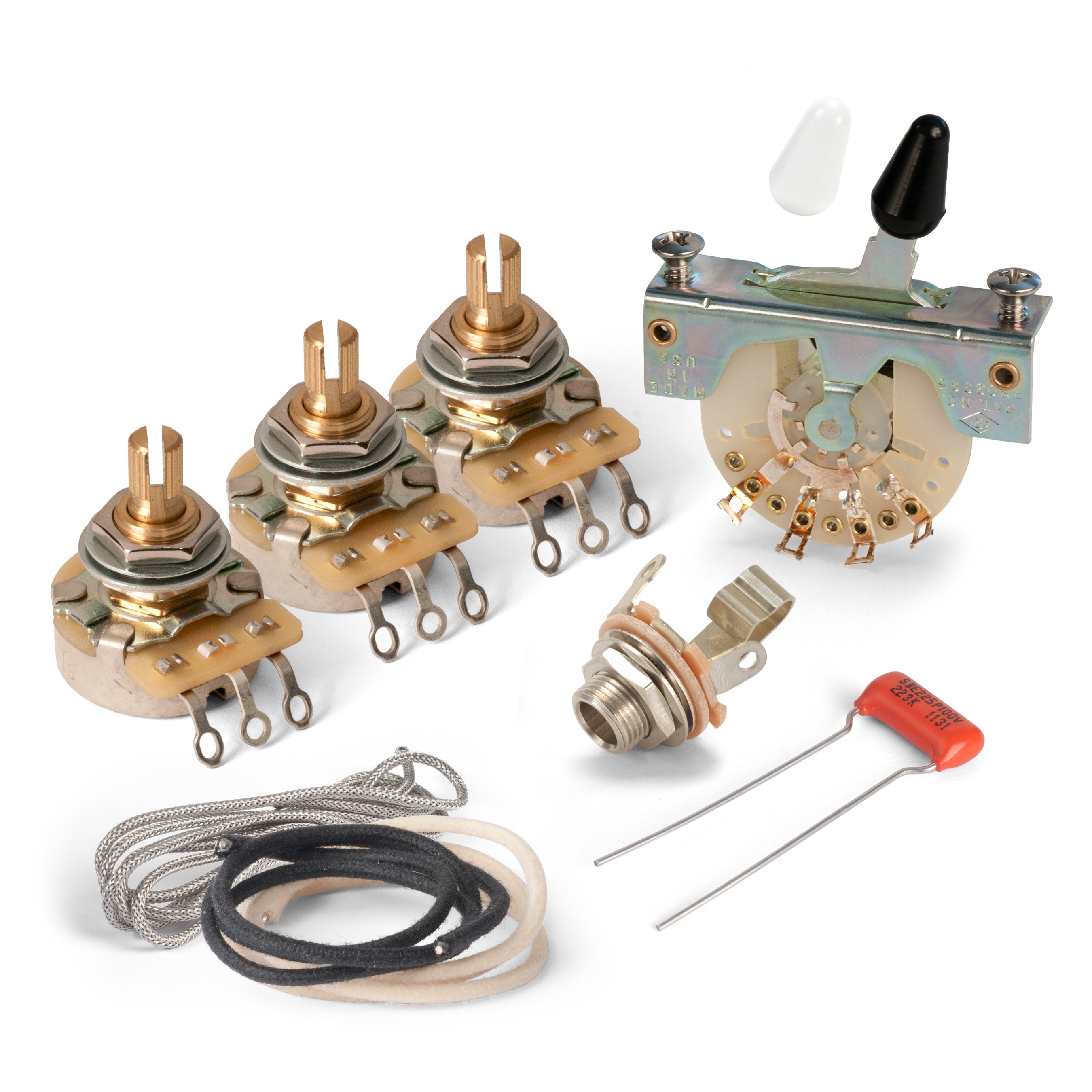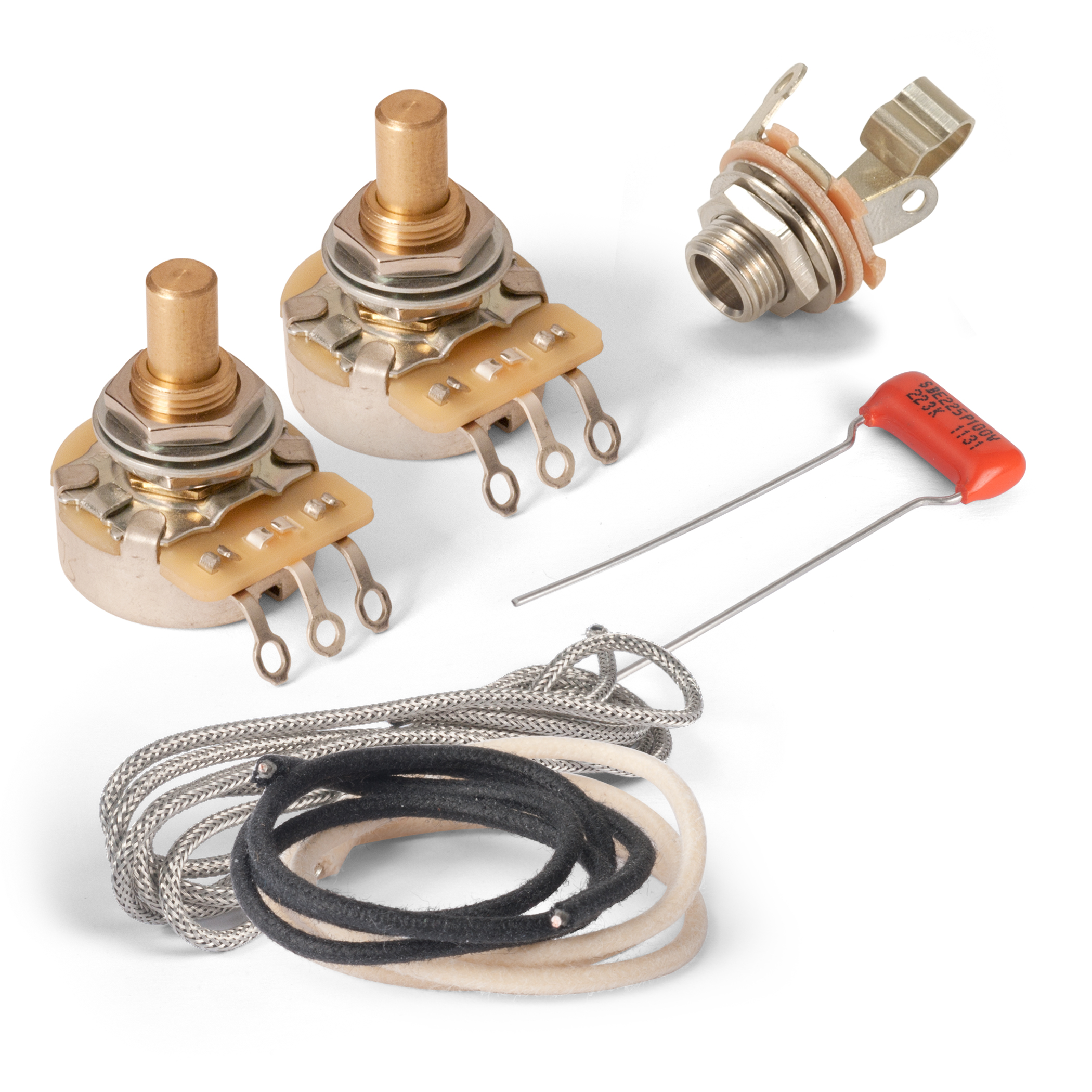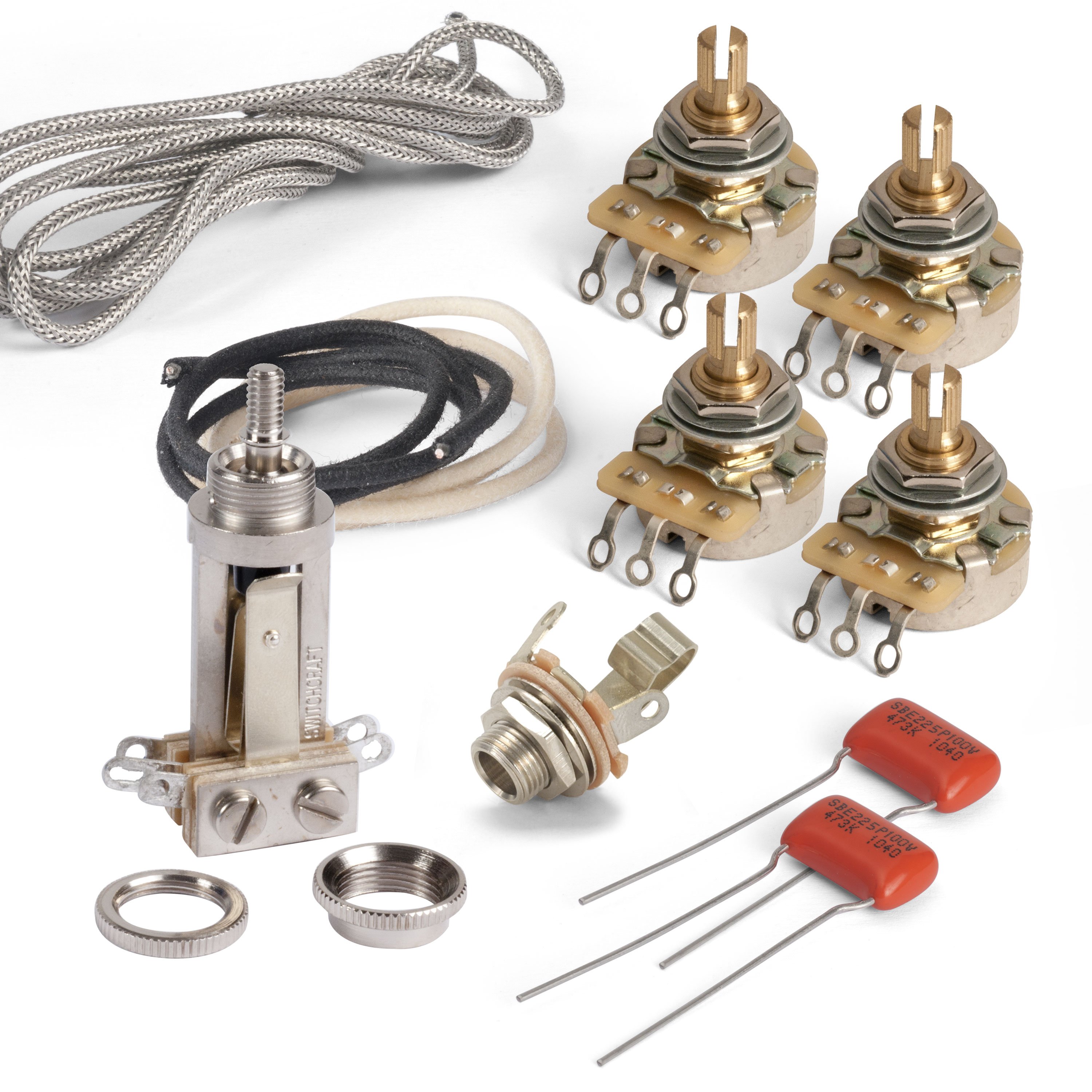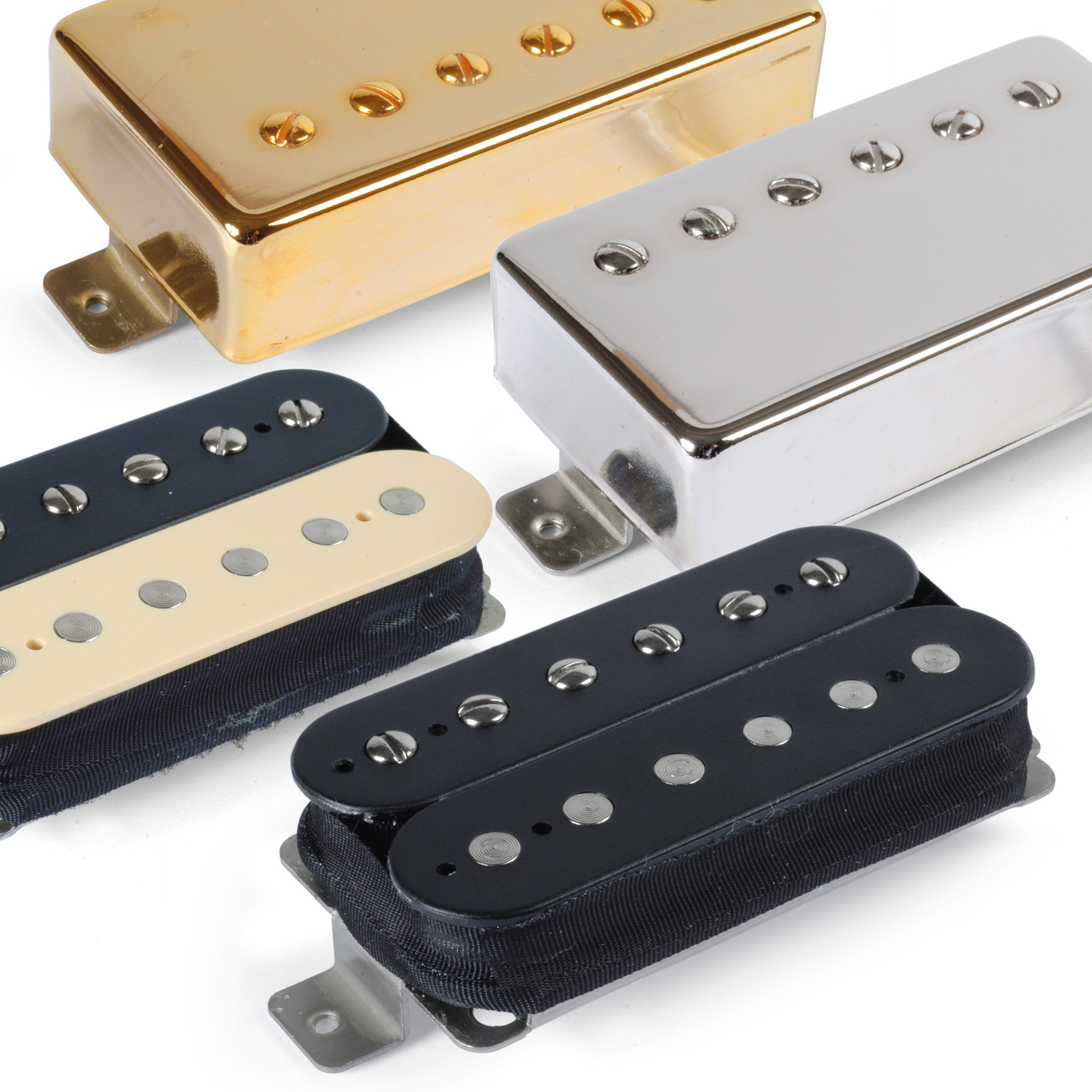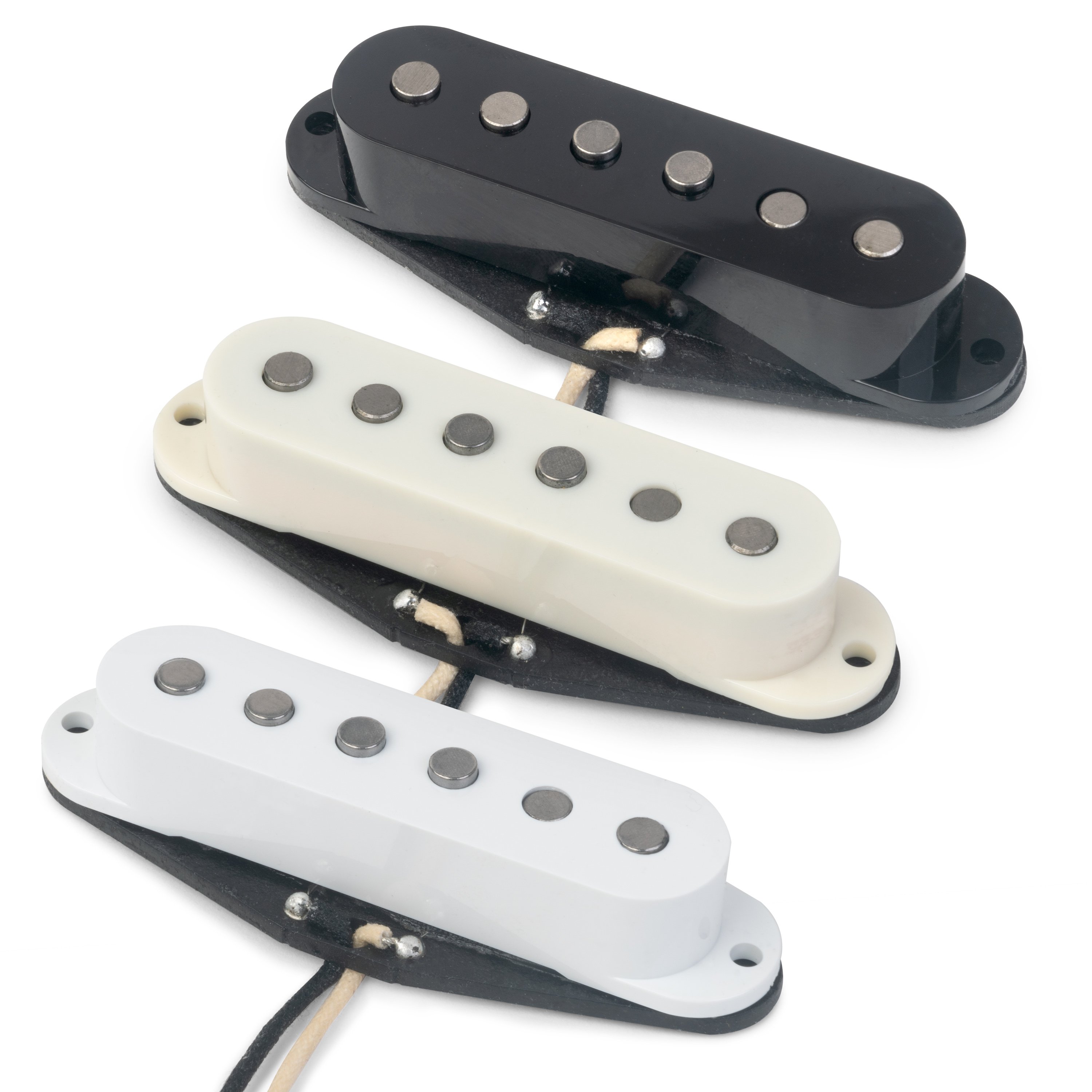Understanding Guitar Wiring, Part 1: How a magnetic pickup works
How a magnetic pickup works
Through the process of inductance, an electrical current is generated (see generator) in a coil of insulated wire, which is then sent to the amplifier. If you have a coil of insulated wire wrapped around a magnet you create a simple generator. If the magnetic field of the generator is held in proximity to an oscillating (vibrating) ferrous material, then an alternating (or AC) electrical current will be generated. Conversely, if you wrap a coil of wire around a ferrous material, a nail, for example and apply an electrical charge to that coil, the ferrous rod (the nail) will turn into an electromagnet.
One misconception that a lot of people have is that the guitar amplifier is sending a current to the guitar—this is not true. A cable plugged into a guitar amp will not shock you—unless there is a severe grounding problem with the amp! The pickup generates an AC signal and sends it to the amplifier, via the various pots and switches. The amplifier then takes this weak signal (measured in millivolts and typically never exceeding 2 volts) and through a series of gain stages, boosts the signal to a voltage and amperage that can drive the speakers.
The specific parts and their purpose
The Bobbin Frame
Different types of pickups have different bobbin and/or frame construction. Traditional or vintage-style Fender single-coils have the simplest construction with polepieces pressed directly into the flatwork. Humbuckers and other single-coil pickups have a molded plastic bobbin to accept ferrous slugs, adjustable polepieces or screws, or permanent-magnet polepieces, depending upon the design of the pickup. Humbuckers also utilize a metal frame (usually brass so that it doesn't affect the magnetic field), to which the various components attach.
The Coil of Copper Wire
The pickup coil-wire or magnet-wire is wrapped around the bobbin assembly. The fine wire is either machine-wound or hand-wound depending upon manufacturer specs or the desired tone. The 42 or 43-gauge wire must be handled very carefully, as it's very thin and fragile. Different pickups utilize more or less turns of copper wire. This is one way that manufacturers can change the output and tonality of a pickup design. Coils generally have anywhere from 6,000 to 8,500 turns of wire.
The Magnets
Depending upon the design of the pickup, magnets come in a wide variety of shapes and sizes. Magnets can also be made from various permanent-magnet materials, such as AlNiCo and ceramic.
The differences between single-coils and humbuckers
There are many differences between single-coil and humbucking (hum-canceling) pickup designs—everything from inherent tonal qualities to their size and shape. A humbucker must have two coils that are wired to that they effectively cancel 60-cycle hum. To achieve this cancellation in the traditional sense, the coils must have opposite magnetic polarity and are wired electrically out-of-phase.
A pickup is simply an antenna. A single-coil pickup is nothing but a big antenna for hum and RF interference. When two coils of the proper magnetic polarity and electrical phase are combined, they will effectively filter out RF interference without canceling the output or sound of the pickup. This is a humbucker!
Understanding 4-conductor pickups
To understand a 4-conductor pickup, we must first study a single-coil pickup since a humbucker is simply two single-coils combined as one pickup. A single-coil is comprised of three primary components: magnet(s), the coil that has a "start" and a "finish" and the bobbin. Think of a single-coil as a 2-conductor pickup—the start and the finish. When a single-coil is wired, typically the start is connected to ground, and the finish is hot.
Since a humbucker is two coils each with their own start and finish, we now have four conductors. The four conductors can be wired in a variety of ways. First, the coils can be wired in series or parallel, the coils can be in-phase or out-of-phase with each other. The traditional humbucker is wired in series, out-of-phase (see diagram #1). The series link gives a boost to the output (parallel reduces output and gives a more nasal tone), and the out-of-phase correlation acts to cancel the hum.
Coil polarity and phase relationships
Determining a coil's magnetic polarity is very important for achieving hum-canceling combinations of coils from two different pickups. Many humbucking pickups by various manufacturers have the same type of polepieces for both coils. In other instances, you can use a known pickup's coil(s), to see if it repels or attracts the other pickup. Remember, similar magnetic polarities repel each other, while opposite poles attract.
Use the chart below to help determine what the phase relationship will be between two coils. This chart assumes the typical parallel connection—the connection you get with a selector switch.
More in This Series
Part One: How a magnetic pickup works
Part Two: What is a potentiometer and how does it work?
Part Three: How is a volume pot wired?
Part Four: What is a capacitor and how does it work?
Part Five: Selector Switches
Part Six: Mini toggle switch basics and push-pull pot basics
Part Seven: Output Jacks
Part Eight: Grounding and Shielding
Part Nine: Understanding impedance and impedance matching
Part Ten: Wiring Glossary
Part Eleven: Sample Diagrams
